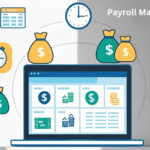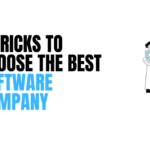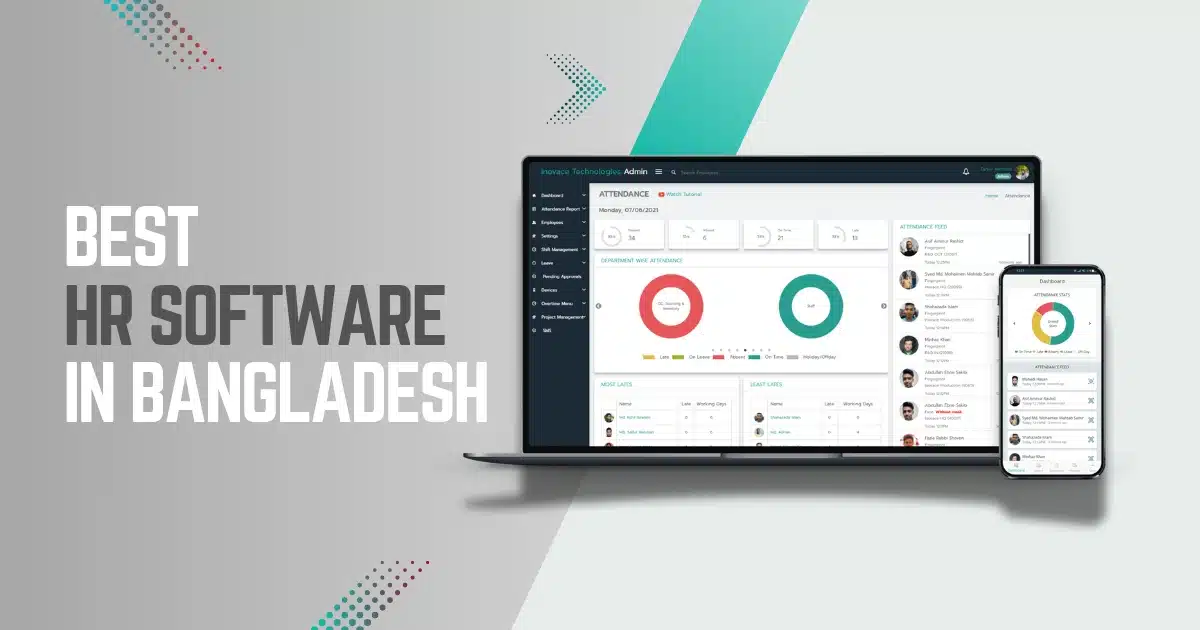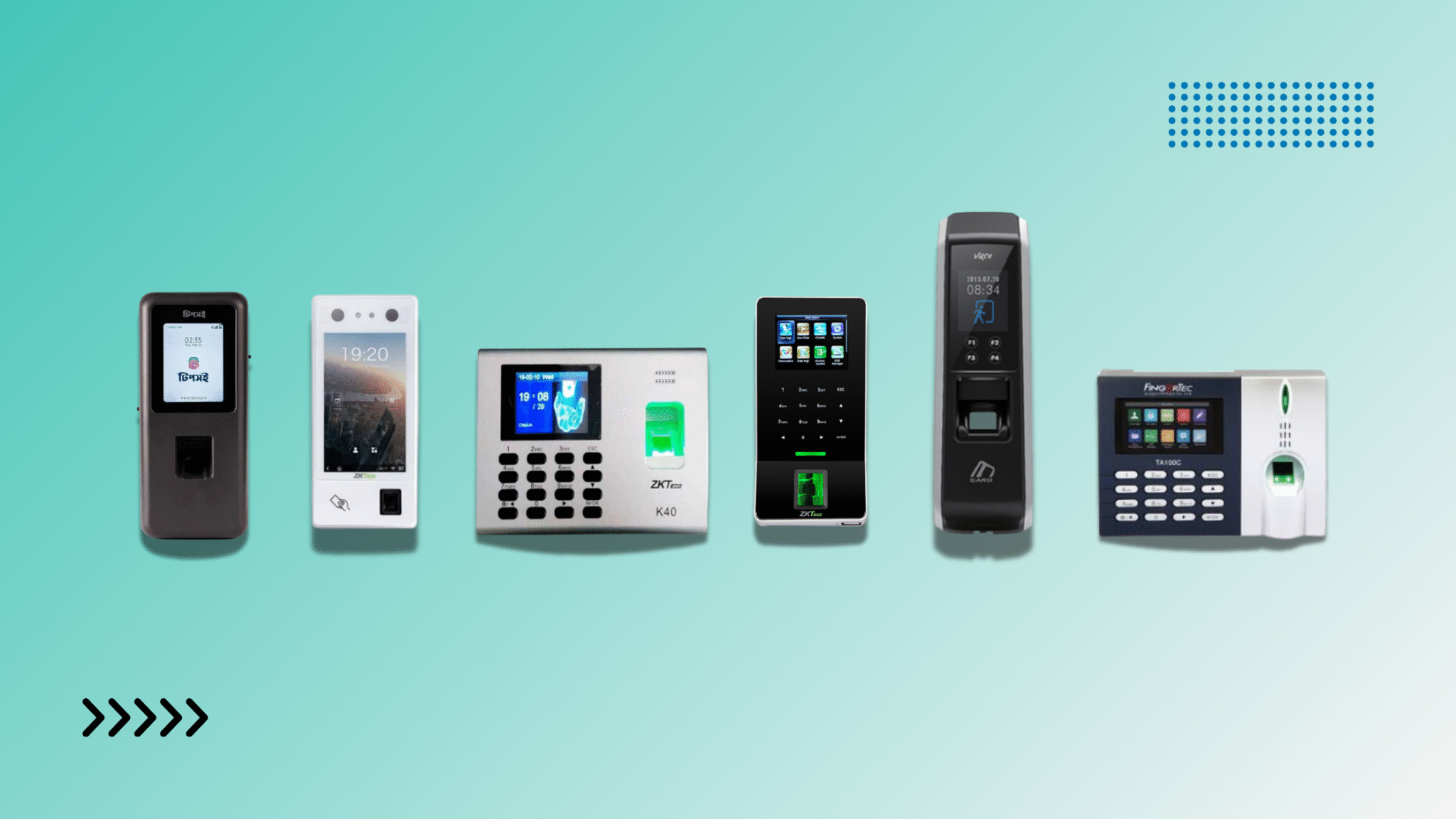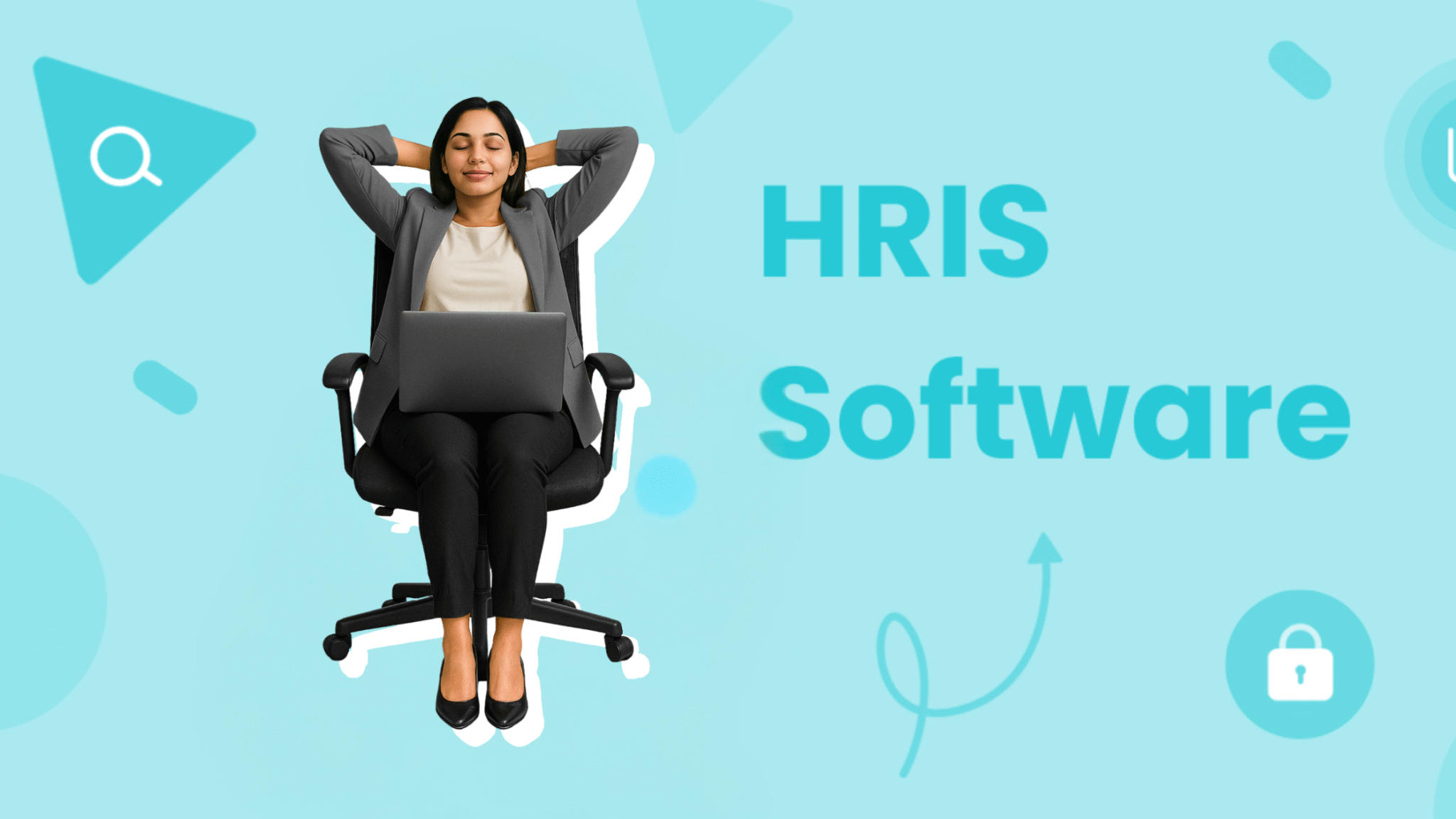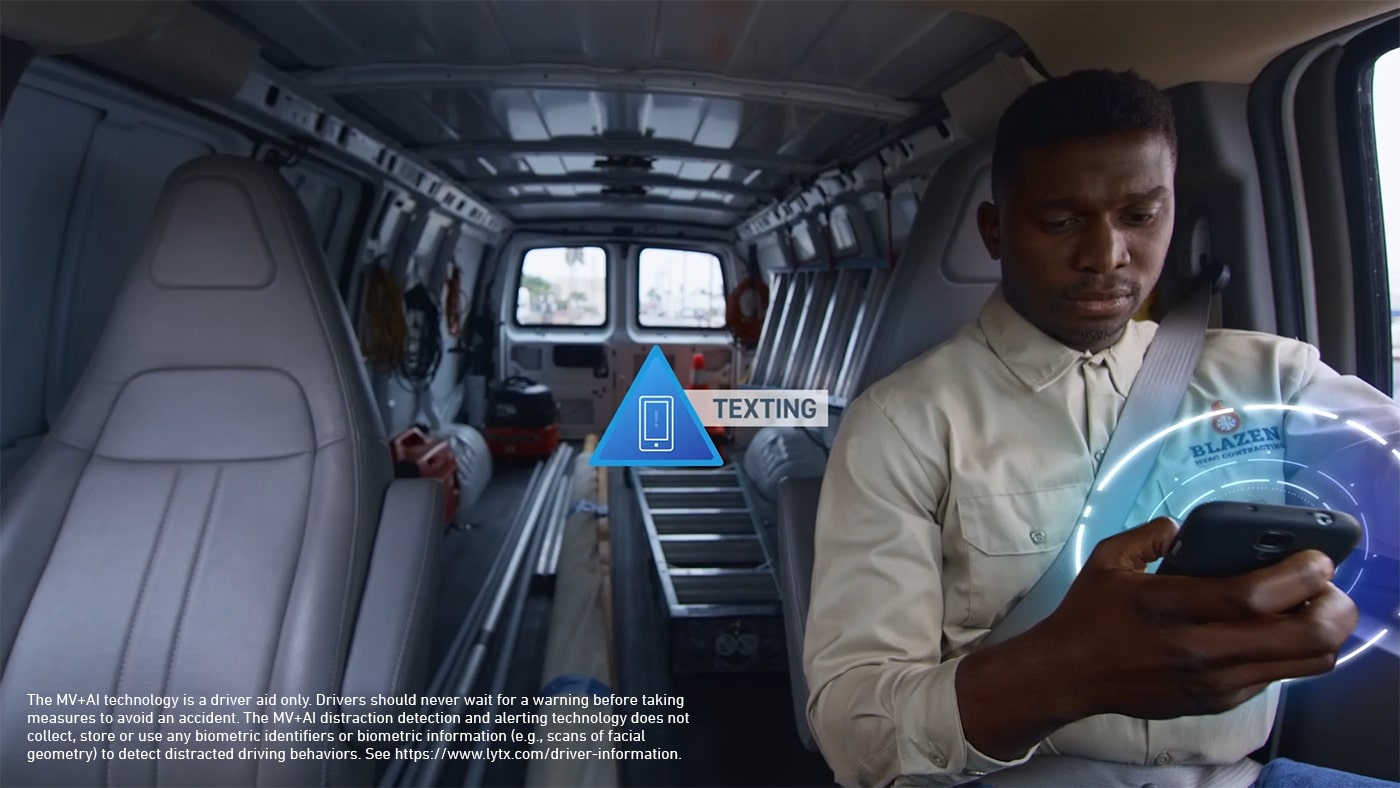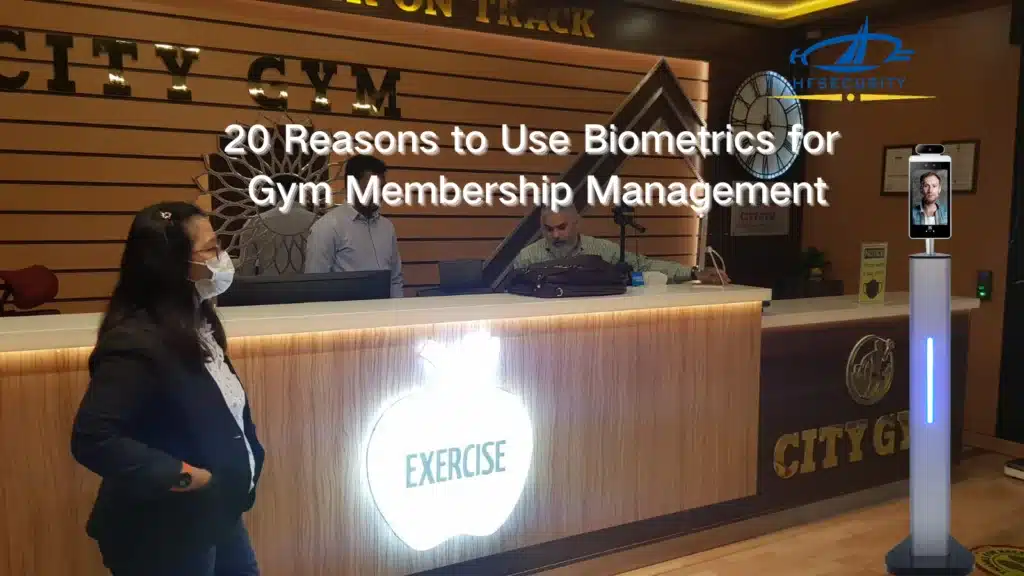
What is HR Software?
HR software manages employee information and HR-related tasks. At the same time, it automates dull processes like-
- Time tracking,
- Leaves Management and
- Payroll
Most importantly,
You can focus on engaging and developing employees with HR management software. Thus, it can provide a central warehouse for employee data. This makes it easier to access and analyze for more effective decision-making. And it also makes it easier for the HR team to play “Guess Who” with the employee data!
Jokes apart, a human resources management system is the key to managing employees in modern businesses. Moreover, managing human resources with HR software has become increasingly easier and more efficient daily.
Emphatically,
You can keep your employees happy and drive productivity by choosing HR software that works with your business. 96% of small business owners who use HR software see their accountant as a trusted advisor.
To clarify,
It is similar to a farmer investing in the right tools and machines to increase efficiency. By selecting the right equipment for their needs, farmers can save time, money, and energy while improving the quality and quantity of their crops.
Altogether,
HR Software’s primary attributes are-
- Streamlining administrative staff
- Data organization relating to people
- Sharing and collaborating data
- Responding to urgent issues in real-time
- Assisting in the aesthetic process
- Online community that is easy to use
Types of HR software
No matter what you’re looking for, knowing how each human resource system works is crucial, whether you’re an HR professional or a leader.
Here are some of the most popular HR software types:

1. Human Resources Information Systems (HRIS)
Additionally, most HR departments commonly use HRIS as their primary HR software.. Typically, an HRIS includes every data you need for end-to-end HR management. Moreover, it’s great for recruiting, performance management, learning, and development. Notably, Many consider it the best HR software.
Moreover, it stores employee data and is widely used by HR professionals for hiring, training, and compensation.

Notably, among the things HRIS stores are:
- Employee info includes names, addresses, and birthdates.
- It covers job specifics like start date, pay, and duties.
- Training attendance tracks performance.
- Employee’s meds and retirement benefits info.
2. Human Resources Management Systems (HRMS)
HRMS refers to the Human Resources Management System.
This software’s main focus is to work on talent and cost efficiency. Additionally, it enhances the management of employee data and work processes. To specify, it automates the tasks of an organization. Then, it stores all work data in one single application. As a result, HR departments can find important employee information faster.

Therefore, it reduces paperwork and saves time.
3. Human Capital Management (HCM)
HCM aims to hire the right people, manage your workforce effectively, and optimize productivity. Historically, the function was viewed as administrative before. But today, it’s a critical business enabler.
HCM can boost productivity and help HR managers hire, engage, and retain staff. You may also be able to eliminate costly redundancies and make better decisions with an integrated HCM solution.
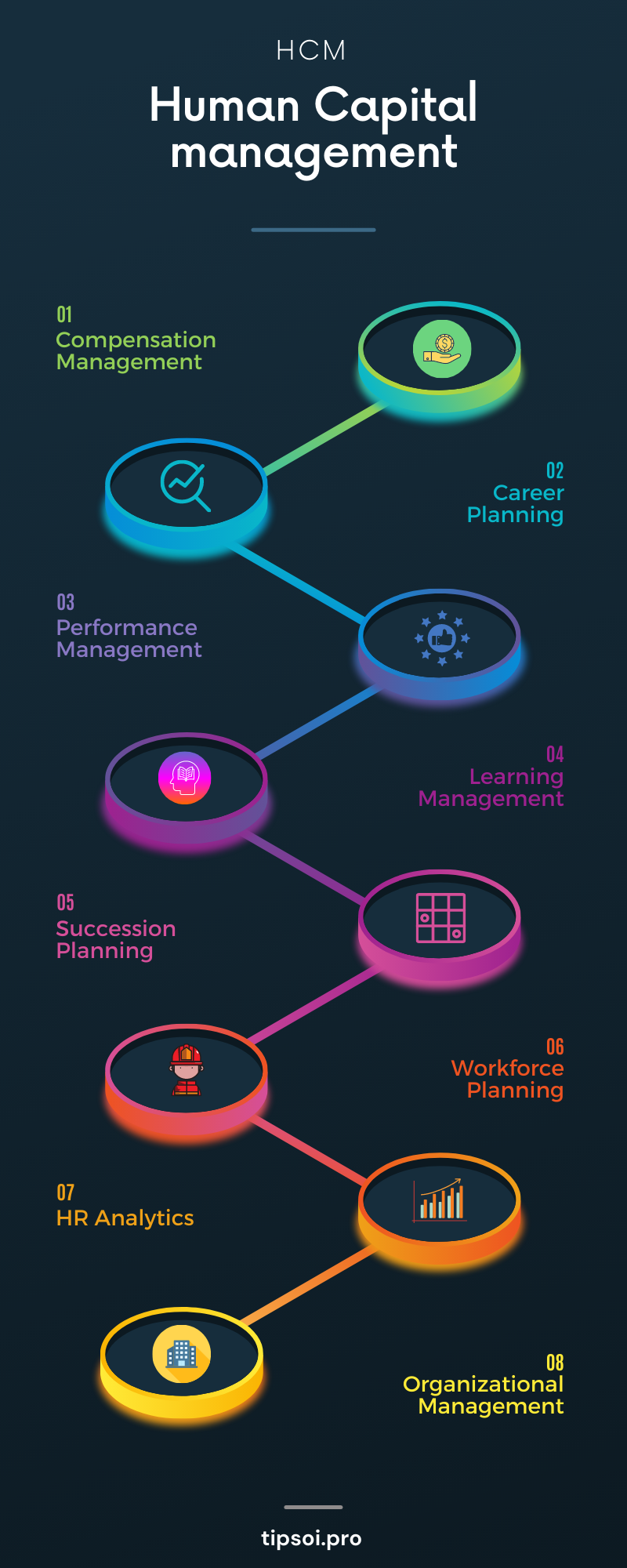
So, it can be an ideal HR software for any company size.
4. Applicant Tracking Systems (ATS)
The Applicant Tracking System (ATS) is an all-in-one HR recruitment process solution. It automates the hiring process by helping HR teams manage recruitment efficiently. Coupled with job posting to onboarding, it solves recruiters’ challenges.
In particular,
The ATS’s general features are:
i. A Centralized Data Repository
ATS acts as a centralized repository for recruitment-related documents. It efficiently organizes and stores resumes, cover letters, references, and other vital hiring data. And so forth, ATS ensures that HR teams can access all the necessary information. Therefore, it helps foster a streamlined hiring process.
ii. Candidate Tracking
One of the critical features of an HR management system is the ability to track candidates throughout the hiring process. It allows HR teams to monitor the progress of each candidate, from application submission to final decision. This real-time tracking provides valuable insights and helps HR professionals make informed decisions promptly.
iii. Candidate Selection
HR parameters are critical. It is difficult to find the ideal candidate for a position. Advanced HR software, like an ATS, leverages these parameters to evaluate candidates objectively. Also, it helps identify candidates with the required qualifications and experience. What’s more, it eliminates unqualified applicants. Consequently, the hiring process is streamlined and only applies to those who make it to the shortlist.
iv. Automated communication
One of the most significant advantages of ATS HR software is its ability to automate communication. It handles time-consuming administrative tasks. Such as sending notifications and emails to employees and job candidates. This automation saves time and ensures that essential communications are consistent and timely.
5. Payroll Systems
It’s hard to keep up with payroll when your organization expands quickly. It’s a program that calculates, processes, and distributes paychecks on time. Payroll software solutions simplify and streamline payroll processes. They also provide valuable insights into labor costs and employee data. You can use a payroll system to calculate employee hours pay and generate paychecks.
You can also manage:
- The tax withholding
- Deductions from paychecks
- Paying for health insurance
- Contributions to 401(k)s
6. Onboarding Software
Onboarding software simplifies the hiring process. Naturally, it tracks recruitment procedure paperwork and stores all data in one place. This feature allows HR managers and new hires to communicate before the start date. Also, employees feel more productive and blend faster into their designated teams. As a result, HR can reduce turnover within the first year.
Additionally, it contains more than just onboarding forms and templates. So you can use the app to create personalized workflows and welcome portals. Additionally, you can engage new hires with the company through this software. Onboarding software is part of a larger HR system. In any case, most onboarding software is compatible with HR software.
Onboarding software features:
- Communication before the first day of work between employer and employee.
- Keep track of all your onboarding paperwork.
- Track new-hire activities like training or new-hire events
7. Performance Management Systems
A performance management system helps you track and measure employee performance always. Centrally, it allows you to set clear goals and helps you observe progress. Besides, it helps you to identify areas for improvement. You can provide feedback and guidance for employees in this HR software.
To achieve the strategic objectives,
This system combines technologies and methodologies. For example, it could include automated performance reviews, digital check-in meetings, and online performance tracking tools.
However,
The effectiveness of this system also depends on how well you use it. The more defined and applied it is, the better the results will be. If you do it right, your employees will be more engaged through the cloud HR software. Additionally, you may reduce turnover and maximize revenue on the way.
8. Learning Management Systems (LMS)
The learning management system, or LMS, provides the framework for managing all learning factors. In short, it’s where you house, deliver, and track your training content. It can also take care of onboarding, compliance, and skills gaps.
The most common name for an LMS is “learning management system.” Still, there are other names for it. For example, “learning activity management system” or “learning experience platform”.
LMS & LCMS:
LMS often gets confused with LCMS. But they are not the same. A learning content management system (LCMS) is HR software for authoring and managing learning content. Even if neither system is the same, they complement each other.
Pro Tip:
Almost 2 out of 3 organizations use SharePoint or LMS. Suppose you’re using SharePoint for content management. In that case, you might want to add a SharePoint-based LMS to make it even more efficient since the systems can communicate more easily when married. You will just have to log in once. Then, you manage content and move training modules seamlessly into the LMS. It benefits administration that easily.
Advanced Features of HR Software
1: Recruitment & Hiring
Recruitment finds and attracts qualified employees for your company, while recruitment entails engaging the best candidate. Hiring and recruiting are distinct processes, but both are necessary to find and onboard qualified employees.
HR Software automates finding the right people at the right place and time. Also, it streamlines hiring with easy-to-prepare templates. Along with that, it follows up on candidates from time to time. For example, an applicant tracking system (ATS) can accept or reject applicants simultaneously depending on job criteria. It speeds up the placement process and saves money on dedicated resources.
In short,
The core HR features of recruitment and hiring are-
- Preparation of the job design
- Management of the recruitment and hiring process
- Keeping track of the number of applicants
- The process of managing candidates
- In the area of employee management
- Managing resumes and CVs
- The reporting and analytics process
- Regulations and compliance
- Providing onboarding services
- Satisfaction and engagement of employees
- An integrated social HR management system
So, HR software is like a magical elf that does all the hard work for you! It’s even better with Tipsoi’s mobile app, HRMS, which integrates with your existing office software.
2: Talent Management
Managing talent is one of the most critical responsibilities of any HR management department. Using this procedure, employees’ journeys are guided. Indeed, it begins with how employees are recruited to the organization and continues through their time there.
In short,
The most common talent management standout features are:
- Hiring and selecting,
- Learning plus developing.
- Engaging and building a culture and
- Succession planning.
- App integrations
There’s a lot more to it, like recruiting and performance management. However, software systems like Talent Management combine all HR systems under one roof.
For example,
Tipsoi’s talent management software features include recruiting, onboarding, learning, and employee engagement tools. Ensure you know what features are included under the “talent management” header when shopping for updated HR software.
3: Onboarding and Offboarding
Employee onboarding and offboarding aren’t glamorous but essential for hiring and firing. Using HR software, you can generate paperwork and e-sign documents so you don’t have to deal with paper. There are also HR systems that let your IT team set up and decommission employee devices.
In short, it-
- Makes job postings easier
- Enhance the onboarding process
- Follow regulations to ensure compliance.
- Error reduction
- Engages employees more effectively
- Managing data centrally
For example,
Tipsoi by Inovace Technologies facilitates employee onboarding through a dedicated software solution designed to facilitate new hire onboarding. Talk about a one-stop shop for all your employees’ coming and going needs!
4: Payroll and Compensation Management
As the name implies, the payroll solution calculates and pays salaries. And withholding appropriate taxes and deductions. Also, it ensures paychecks are printed and delivered on time.
Payroll services can easily handle all legacy compensation and benefits systems through their well-defined formulae.
Including,
- Salary
- Allowances
- Overtime rates
- Benefits enrollment
One of the most valuable features of HR software is this feature.
Automating payroll has core benefits:
- Access to compensation data and rewards/bonuses in a single HR software
- You don’t have to do any document management (if it’s in a system, payroll software can access it).
- Savings on staffing and overhead.
- It’s coordinated and doesn’t rely on files, databases, and spreadsheets.
- Handle global payroll.
It’s the ultimate “do-it-yourself” approach! Just like a jigsaw puzzle, without the mess!
5: Workflows Automation
Using workflows, large businesses can automate many repetitive, regular HR tasks that drag down efficiency. To keep everyone informed, the system sends automated notifications. Thus, by analyzing the data, HRMS eliminates the huge cost of manual paper push policies.
Also,
It’s the ability to handle the entire process through the following:
- New hire management
- Workforce analytics
- Employee self-service
- Expense reporting and management
- Payroll processing
- Onboarding workflows
- Document management
- How are employees doing?
- Whether they’re engaged
- Ease Meeting expectations and
- Achieving their objectives
It’s exhausting doing all these manually. But HRMS can make things easier if you consider it a robotic assistant who is always there when needed! Tipsoi’s custom-made HR software focusing on business needs has many features to explore.
6: Time Tracking and Leave Entitlement
The Applicant Tracking System (ATS) simplifies hiring. No more paper resumes. It finds candidates and tracks recruiting success. In general, HR software streamlines everyday tasks for multiple businesses. This tool easily manages absenteeism vacation entitlements and balances. Evaluate job satisfaction with HR software. It also tracks absenteeism for better HR insights.
The benefits of this feature of HR functions include:
- Manage attendance and time accurately.
- Keep in touch with workers who don’t have desks.
- Analyze your organization to determine what areas need improvement.
- Regardless of where employees work, understand their data.
- Analyze the actual data from the project.
- Make the most of your time.
- It contains custom integrations.
To evaluate job satisfaction, absenteeism is crucial. After all, time is money, and if you’re not at work, you’re not making any!
7: Employee Scheduling
Besides time tracking, some companies need employee scheduling software to manage shift schedules. Depending on employee availability, you may need to plan for the busiest times beforehand. Also, you can categorize employees by location or role with Tipsoi’s colorful, drag-and-drop shift management software system. Besides that, it has a self-service portal so employees can mark their work schedules.
Here’s a list of employee scheduling features for you to look into.
- Reduced costs and enhanced visibility
- Significant time savings achieved
- Reduced errors and improved efficiency
- Streamlined leave and time-off requests through a unified platform
- Conflict-free scheduling for smoother operations
- A strategic staffing approach for better resource allocation
- Labor cost reduction measures implemented
- Enhanced communication effectiveness Increased customer and employee satisfaction levels
- Improved employee contentment
- Added convenience for all stakeholders
- Effective performance planning and management
- Compliance with scheduling regulations
- Remote attendance options provided
Just when you thought the day couldn’t get any more exciting!
8: Performance Evaluation
Leadership success depends on how well you manage promotions, says the HBR.
By using KPAs and KRAs, HR software simplifies assessment. Also, it gives a more transparent and unbiased view of every employee’s attendance. Knowledge management becomes more effective when individual productivity and skills are tracked.
9: Learning and Development
Additionally, employees need to update their skills with technological and process changes. You can use HR software to identify this skill gap, manage employees’ training requirements, and track significant training costs. Furthermore, AI is expected to improve learning, compliance, candidate assessment, and retaining new skills with HR software.
10: Employee Benefits Administration
A human resources department can devise plans, configure eligibility rules, manage employee compensation, and pay or deposit workers on top of their wages using the system. In addition to offering self-service enrollment, it also integrates compensation costs with accounting.
Best HR Software in Bangladesh?
Tipsoi
Cloud-Based HR Automation System (Customizable According To Your Need)
➲ All-in-One HR Help:
Fingerprint, RFID, face recognition? Yeah, we’ve got those, all synced up with our web and mobile apps. Attendance, shifts, leave, expenses, payroll, benefits, loans… consider it handled.
➲ World Domination (HR Edition):
Multiple offices? Remote teams? No problem. Our central monitoring puts you in the driver’s seat, giving you real-time insights into your entire workforce, no matter where they are.
➲ Mobile Punch, No Excuses:
Got employees out in the field? Let ’em clock in and out on their phones. We’ll even use Google Maps and a selfie to make sure they’re not sneaking off for a beach day. Our mobile punch feature, complete with GPS and image verification, gives your employees the freedom and flexibility they crave, while still ensuring accountability.
➲ Shift Management: Perfected
Create and manage shifts with a few clicks. No more schedule conflicts, no more confusion. Just pure, streamlined efficiency. With Tipsoi it’s easy to set up and monitor different work shifts and make sure people are working when they’re supposed to.
➲ Employee Data: Organized, Accessible, & (Dare We Say) Enjoyable:
No more digging through piles of paperwork. All your employee information is stored securely in the cloud, accessible anytime, anywhere. It’s like having your own personal HR assistant, always at your service.
➲ Versatility and Scalability:
From Fortune 500 companies to local startups, Tipsoi’s got the flexibility to handle it all. We scale with you, adapt to your needs, and empower your HR team to conquer any challenge. Whether you’re a small startup or a global enterprise, Tipsoi is designed to grow and adapt with you. We’re flexible, scalable, and always ready to support your unique HR needs. Global giants, local schools, everyone’s using Tipsoi. We’re adaptable, scalable, and ready to take on your HR challenges.
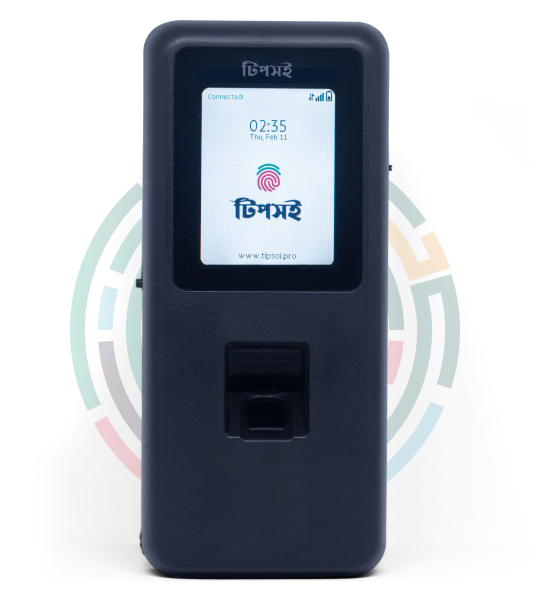
Biometric Authentication Device by Tipsoi
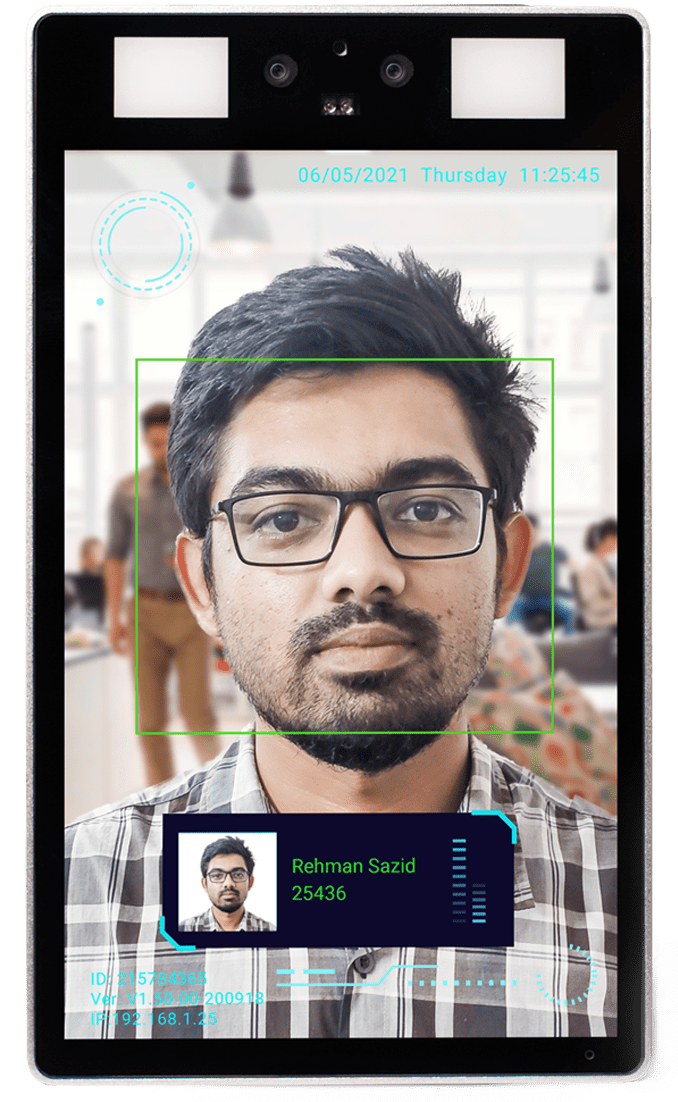
Tipsoi Fastface
Smart Attendance Solution
Inovace Technologies has introduced Tipsoi Fastface, an intelligent
Facial recognition-based device has four different options for you to choose from:
Tipsoi is a cloud-based HR platform that can be accessed from anywhere in the world. It is also customizable and affordable.
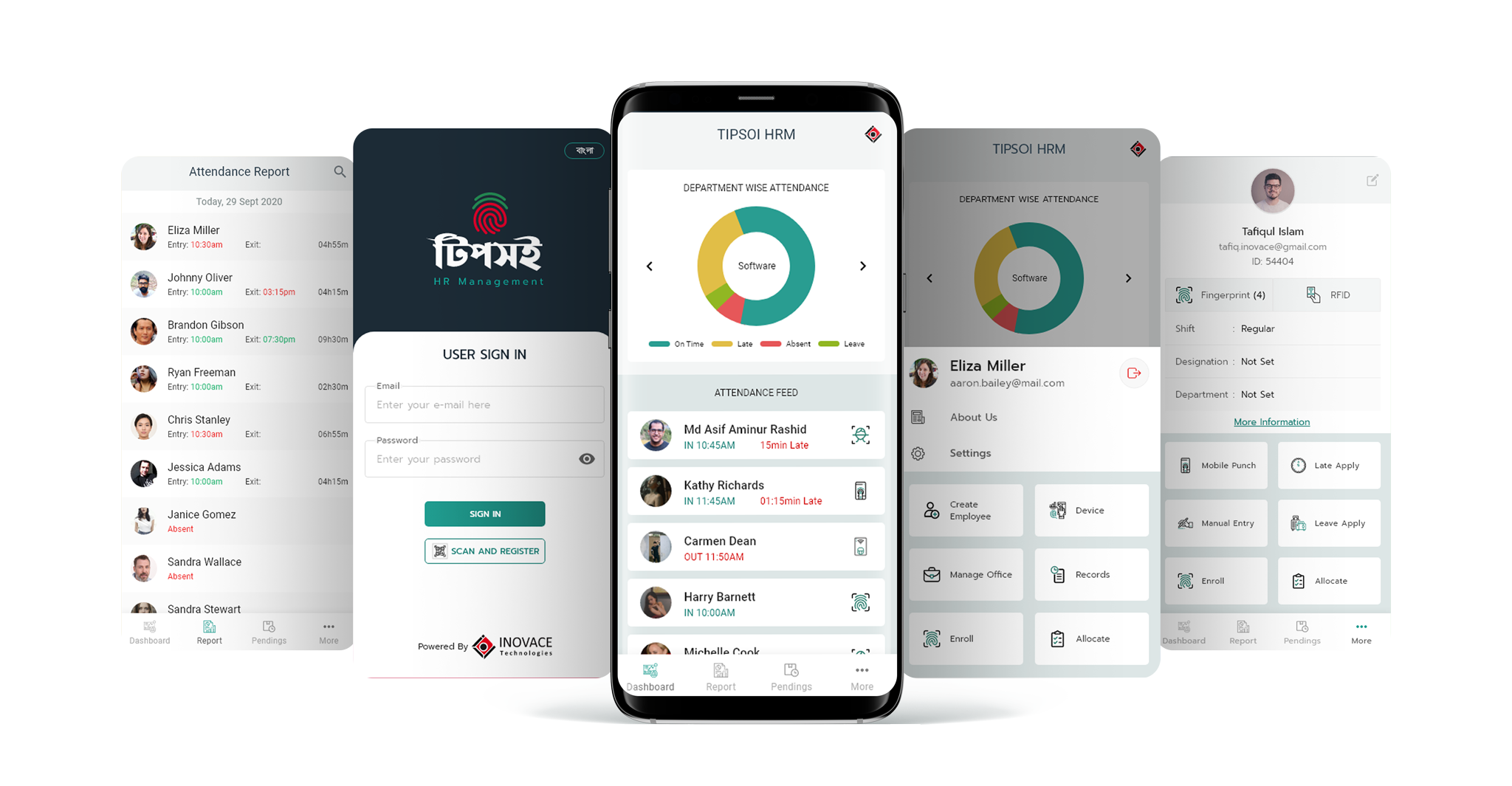
Here are some additional benefits of using Tipsoi:
- Improved security: Tipsoi uses state-of-the-art security measures to protect your data.
- Increased efficiency: Tipsoi can help you automate many HR tasks, saving you time and money.
- Improved accuracy: Tipsoi can help you track employee attendance and other data more accurately.
- Better reporting: Tipsoi can help you generate reports on employee activity, which can help you make better decisions about your workforce.
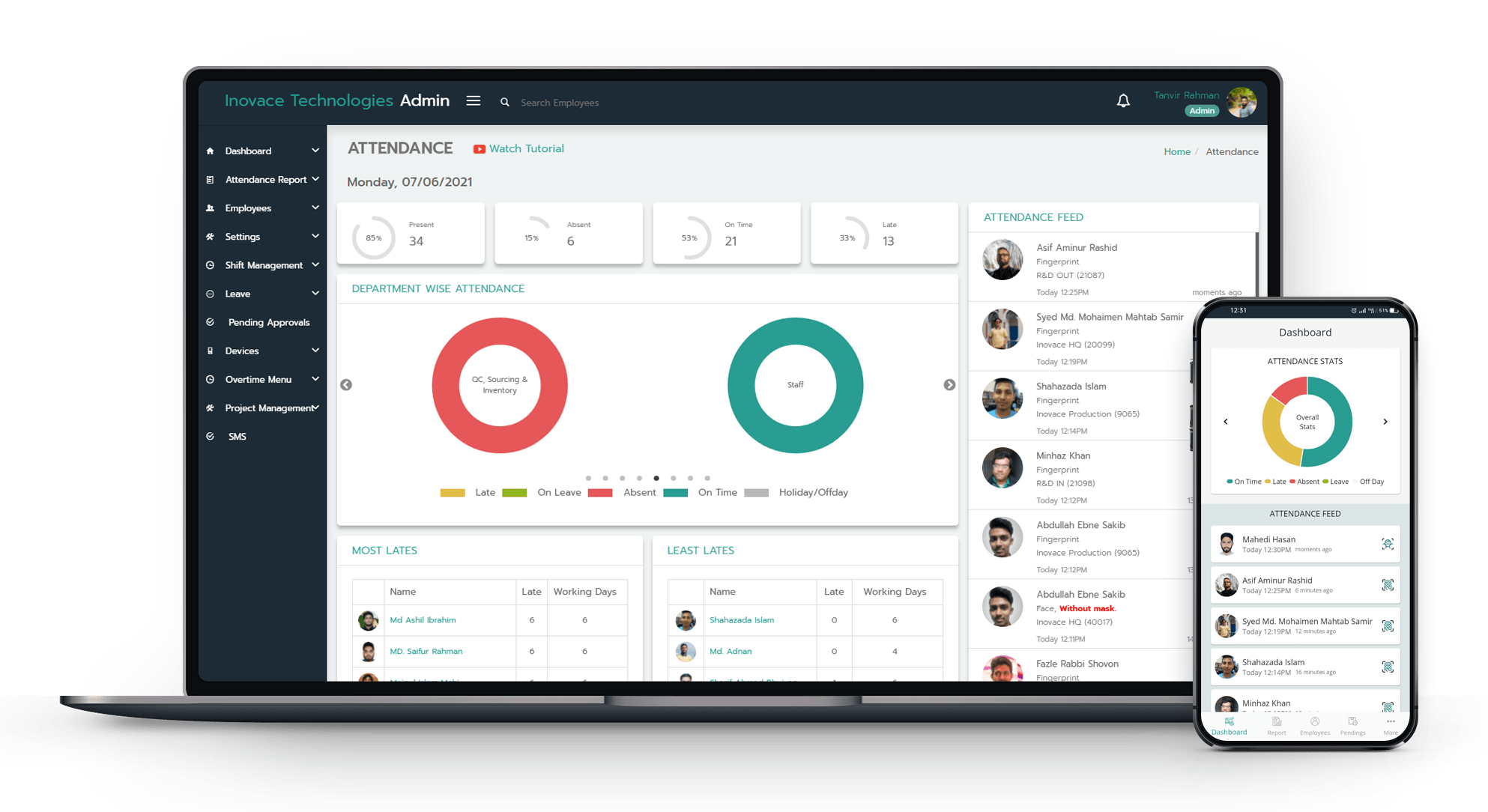
The Bottom Line: Tipsoi is the HR tech you didn’t know you needed (but definitely do). We’re the solution you’ve been waiting for – powerful, intuitive, and ready to take your HR game to the next level.
FAQ (Regarding HR Software)
CRM is an acronym for Customer Relationship Management. Sales, marketing, and customer service use CRM applications to manage their clients and consumers.
Meanwhile, you can also use it to optimize your employee performance. It can automate tasks such as managing employees remotely, selecting personnel, and scheduling meetings. Thus, it certainly increases loyalty and company sales.
1. Operational HRIS
2. Tactical HRIS
3. Strategic HRIS
4. Comprehensive HRIS
5. Limited-Function HRIS
Digital HR uses social, mobile, analytics, and cloud (SMAC) technologies to execute HR services and processes. On the contrary, the traditional HR process relies on face-to-face relations. It starts from payroll and attendance to candidate management and onboarding. In terms of both approach and execution, digital HR represents a significant shift.
An HRMS is a Human Resource Management System, while an ERP is an Enterprise Resource Planning system. As far as business management software is concerned, both can be considered to be in the same category. Despite some similarities, they are distinct systems with different business requirements.
A business management ERP is designed to serve the needs of a company; an HRMS serves the needs of human resources departments.HRMSs cover most of the day-to-day processes involved in managing people. Enterprise Resource Planning (ERP) systems are integrated software platforms that include multiple modules that manage different aspects of a business, such as finance, accounting, inventory, and Human Resources (HR). So you could say HRMS is part of ERP. But ERP is not HRMS.

